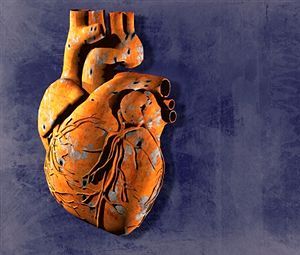The coronary disease known as chronic ischemic heart disease is caused by reduced supply of blood to the heart muscle. It is also known as myocardial ischaemia.
Consider the individual words in the name of this disorder. Chronic means long time or something that has been in play for some time. Ischemia is the reduced blood supply of the heart muscle. Heart disease is easy enough to comprehend as some disorder related to the heart. So put together it would mean a disorder of the heart which has come into being due to reduced supply of blood to the heart muscle over a long period of time.
Despite the long term nature of the disorder it does not mean that there will be continuous symptoms of the disease.

What are the signs of chronic ischemic heart disease?
As it is related to the functioning of the heart there are a number of general signs and symptoms such as pain in the chest which are attributed to this disorder. There are a few exclusive symptoms related to chronic ischemic heart disease which must be paid attention to.
The most obvious of these is the heart palpitations. The rhythm of the heart gets abnormal in the palpitations and the patients feels as though the heart is beating much faster than it should. This happens even if the person is not actively involved in any form of exercise at the given moment which would cause the heart beat to fasten.
Angina pectoris or pain in the chest due to exertion, cold weather or highly emotional and stressful situations are also attributable to chronic ischemic heart disease. It is important to remember that the pain may not be restricted to the chest region, but also felt in the neck, back, shoulders and arms. Since the disorder develops over time and slowly, these niggling small aches and pains can often be dismissed by the patient.
A hard to ignore sign is the difficulty in breathing and swelling up of the extremities, which is likely caused by varied degrees of heart failure. In chronic ischemic heart disease severe chest pain can be associated with the damage done to the heart. Of course not all pains in the upper torso or chest region can be attributed to this disease and so a formal diagnosis is necessary for the treatment to begin.
Tools for diagnosis of chronic ischemic heart disease
Essentially in this disease, the coronary arteries get partially blocked by the fat rich deposits that end up on the walls of the arteries. This is what the doctor trying to diagnose the disease needs to find evidence of. For this purpose he will run a set of tests to help him make the accurate diagnosis.
The first tool for diagnosis of the disease is an electrocardiogram also known as an ECG or EKG. This is able to detect stable angina and acute coronary syndrome. The next test would be a chest X- ray and that will be followed by blood tests as advised by the attending health care professional.














